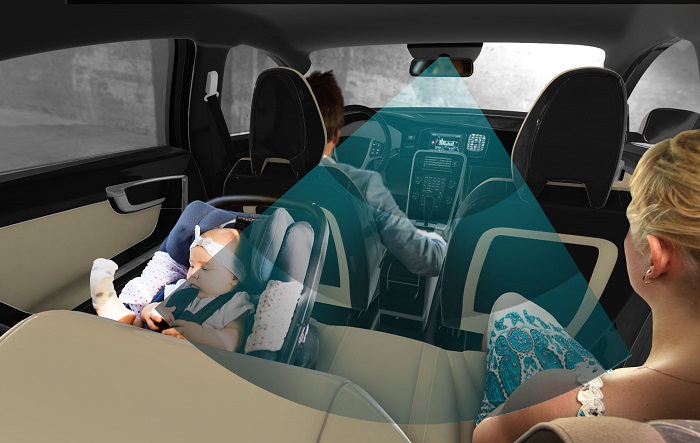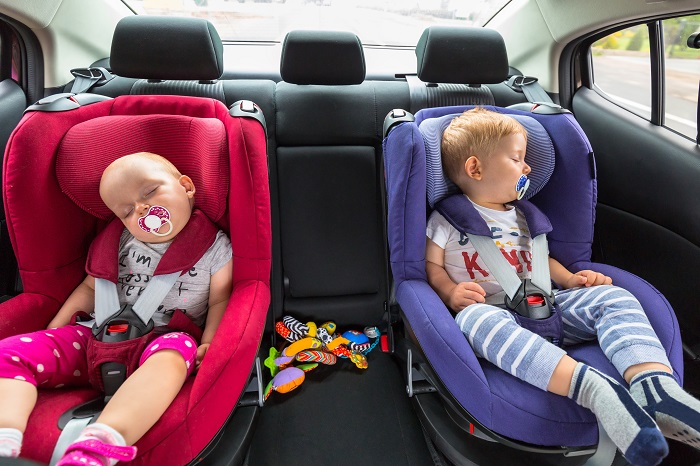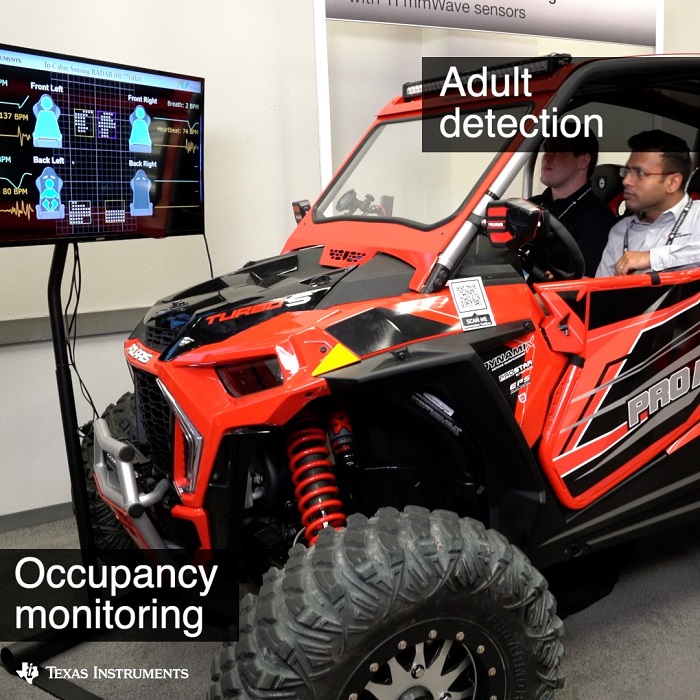By Kishore Ramaiah, Texas Instruments Inc.

Automakers have made great strides in deploying radar sensor technology for use outside the vehicle, but radar-based sensor technologies are also enabling them to develop more effective safety features, particularly for occupant-presence detection.
Advanced driver-assistance systems (ADAS) use sensing technology to understand the external environment, including other cars, pedestrians, cyclists, and buildings. Inside the vehicle, the same technologies can now achieve new levels of accuracy and reliability, including child-presence alerts, seat-belt reminders, and airbag deployment.
The accuracy of in-cabin sensors is particularly important for occupant detection. Automotive radar sensors provide an effective solution that’s easy and affordable to deploy.
Radar can see more than meets the eye
There are many applications for in-cabin sensing designed to keep passengers safe, but child-presence detection is garnering a great deal of attention from automakers and consumers of late, given the potentially tragic consequences of children who are left unattended inside cars.

Fig. 1: Children left unattended inside a vehicle.
To address these concerns, the European New Car Assessment Program (Euro NCAP) roadmap added child-presence–detection solutions as a roadmap feature, with some carmakers implementing the solution as early as 2020. It’s more than just knowing there’s a child still in the vehicle; the goal is to develop systems that can detect children who may be out of the driver’s view, such as in rear-facing car seats, and distinguish them from objects that are similar in size. Modern vehicles today may already have cameras and weight sensors placed in seats for detecting the presence of a person, but current technologies have limitations.
Cameras, for example, can fail to identify a child that is in a rear-facing car seat if it’s not angled correctly, nor can they discern the presence of a child covered with a blanket. A camera’s effectiveness is affected by the available light — too much or not enough. Cameras also raise security and privacy concerns that motion sensing eliminates.
Beyond the effectiveness of traditional in-cabin sensing technologies, there are aesthetics and design considerations as well: Cameras tend to be very visible and their placement is obvious to the occupant.
What’s more, these solutions take up significant space. The size and layout of a vehicle can impact the deployment of cameras, including how effective their coverage might be. If you think about a large vehicle such as a school bus, there could be many blind spots, even with cameras installed, whereby a driver could miss a sleeping child who never disembarked at their stop.
Radar sensors using millimeter-wave (mmWave) technology can provide the high accuracy needed for effective child detection in a wide range of vehicle cabins, because unlike cameras, these sensors can’t be physically blocked. Radar sensors can pass through materials such as plastic, drywall, and clothing and can detect children even if they are hiding in the back of a bus or have a blanket covering them.
While some scenarios do exist in which cameras make sense for in-cabin monitoring, radar sensors offer both accuracy and flexibility because they can gather the most accurate picture of vehicle occupancy.
Enhancing multiple in-cabin applications
By complementing weight sensors with radar or even replacing them altogether, it’s possible for an in-cabin sensing system to detect people and motion, discerning between a person and an inanimate object to help build more accurate systems for seat-belt reminders and airbag deployment.
When an object weighs more than a certain threshold, a weight sensor triggers a seat-belt reminder. But a weight sensor can’t distinguish a bag, box, or purse that’s the size and weight of a passenger, whereas a radar sensor can easily distinguish between the two.
Airbag systems can also benefit from more accurate sensing. By using radar, it’s possible to discern the difference between a child or adult in a seat. In the event that airbags are deployed, the airbag can adjust to account for the size of that person.
Detecting vital signs
The need for in-cabin sensing systems to detect children effectively is being driven by governments, local regulations, and consumer demand. Automakers are eager to respond by implementing solutions that can be cost-effectively integrated into any vehicle they manufacture.
Not only do radar sensors meet today’s requirements, they have already evolved to address emerging concerns for child detection.
For example, the 60-GHz single-chip AWR6843 mmWave sensor from Texas Instruments (TI) has fine movement-detection capabilities that can detect breathing, enabling the distinction between a small child and an inanimate object.
More advanced capabilities for TI’s mmWave sensors include simultaneously estimating the heart and breathing rates of both the driver and passengers while the car is moving. The sensor’s range, from its integration into the overhead console or the roof headliner, extends this capability to all passengers. This can enable applications to estimate the fatigue or sleepy state of the driver and activate an alert.
For applications that require higher resolution, such as detecting the posture of a passenger or driver, imaging radar equipped with the mmWave sensors provides high-resolution occupant detection.

Fig 2: Technical demo shows occupancy monitoring and presence detection using mmWave radar technology in a vehicle.
A major advantage of TI mmWave sensors is the pin-to-pin compatibility of the 60-GHz (AWR6843 ) and 77-GHz (AWR1843 ) devices, which enables automakers to deploy either sensors, depending on the regional regulatory requirements. It also enables designers to reuse hardware and software efforts in sensor design.
These sensors are Automotive Electronics Council-Q100–qualified and help automotive designers achieve Automotive Safety Integrity Level (ASIL) B requirements for interior sensing systems. The sensors also work across a wide temperature range, including a cabin whose temperature could rise quickly on a hot day.
TI mmWave sensors for in-cabin monitoring are available as single-chip solutions with integrated processing (digital signal processor (DSP), microcontroller (MCU), radar hardware accelerator) and low- to high-end memory ranges. A software development kit (mmWave-SDK) provides drivers and application programming interfaces for all of its single-chip sensors and imaging radar. Reference designs and examples are available.
A seamless sensor solution
The need for accurate in-cabin sensors to detect the presence of a child is a high priority for consumers that automotive OEMs and Tier One manufacturers are eager to respond to. Any solution needs to be highly accurate and in a form factor that can easily be integrated into vehicles in a private and nonintrusive way.
Radar sensors are not only changing the way that vehicles sense the environment around them but also how they sense what and who is occupying them. Now it is possible for a single radar sensor to detect and determine the position of all occupants inside a car, classify the occupants in rear seats as an adult or a child, and track occupant vital signs. Radar’s ability to sense through solid materials makes it possible to detect an unattended child, monitor occupant status, and estimate a driver’s vital signs with greater accuracy than ever before.
Advertisement
Learn more about Electronic Products MagazineTexas Instruments





